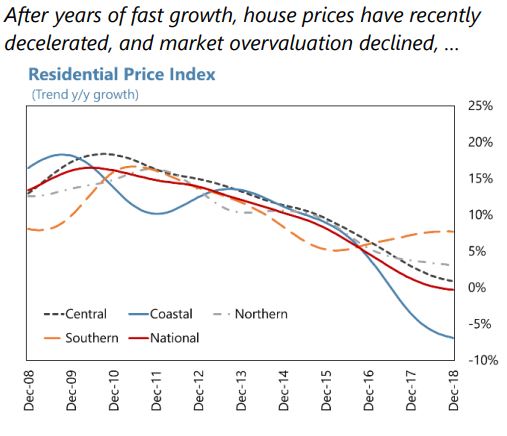Friday, September 13, 2019
House Prices in Namibia
From the IMF’s latest report on Namibia:
Private sector credit and house prices growth decelerated, while private sector indebtedness remained elevated. After years of double digit increases, nominal credit growth to the private sector sharply declined in 2017 and stabilized at around 6.8 percent in 2018.6 With liquidity easing, the deceleration was mostly driven by weak demand from a highly-leveraged private sector and the implementation of some macroprudential measures (…). Weak credit and economic conditions contributed reducing the growth rate in residential house prices to 1.7 percent (9¾ percent average over the past five years). The economic slowdown began affecting the banking sector’s asset quality. Over the last two years, NPLs more than doubled, although from very low levels. More recently, banks have started tightening lending conditions. With government’s financing needs still high, banks’ direct exposures to the public sector continued rising and reached about 10 percent of banks’ total assets (7 percent in 2016).”
Posted by at 10:31 AM
Labels: Global Housing Watch
Subscribe to: Posts
